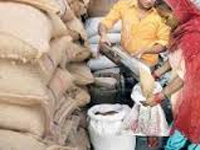Food waste index report 2024
<p>The world wasted an estimated 19 per cent of the food produced globally in 2022, or about 1.05 billion metric tons, according to this new report by the UNEP.</p>
<p>The world wasted an estimated 19 per cent of the food produced globally in 2022, or about 1.05 billion metric tons, according to this new report by the UNEP.</p>
Oshivelo — A desperate plea for immediate government assistance has rung out from the scorched and wilted maize and mahangu fields north of Oshivelo in the Otjikoto Region. Food insecurity and subsequent

Combating criticism from Opposition parties on the Shanta Kumar committee’s recommendation that suggested cutting down the coverage of the Food Security Act to 40 per cent from the existing 67 per cent,
Extending the product life of everyday foods by just one day could prevent 250,000 tonnes of food waste each year, according to the Waste and Resources Action Plan (WRAP). The waste charity released
Question raised in Lok Sabha on prices under PDS, 03/03/2015.
The National Food Security Act (NFSA) 2013 combines and expands the scope of some existing food-based welfare schemes. It will be distributing raw rations, meal(s) and/or cash. Approximately 81.35 crore
Reducing consumer food waste could save the global economy up to $300 billion annually by 2030 as one third of all food produced worldwide ends up being discarded, a research group said on Thursday.
Reducing consumer food waste could save between US$120 and 300 billion per year by 2030 according to a new report by WRAP (The Waste & Resources Action Programme) and the Global Commission on the Economy
Nairobi — At least 1.6 million Kenyans are facing famine, according to the Ministry of Devolution and Planning. A multi-agency assessment meeting of stakeholders pointed out that immediate relief was
The food ministry’s opposition to the Shanta Kumar committee’s suggestion of diluting coverage of the Food Security Act is likely to rekindle the debate over subsidy burden. The committee, for reform of
The world food crisis in 2008 highlighted the susceptibility of the global food system to price shocks. Here we use annual staple food production and trade data from 1992–2009 to analyse the changing properties